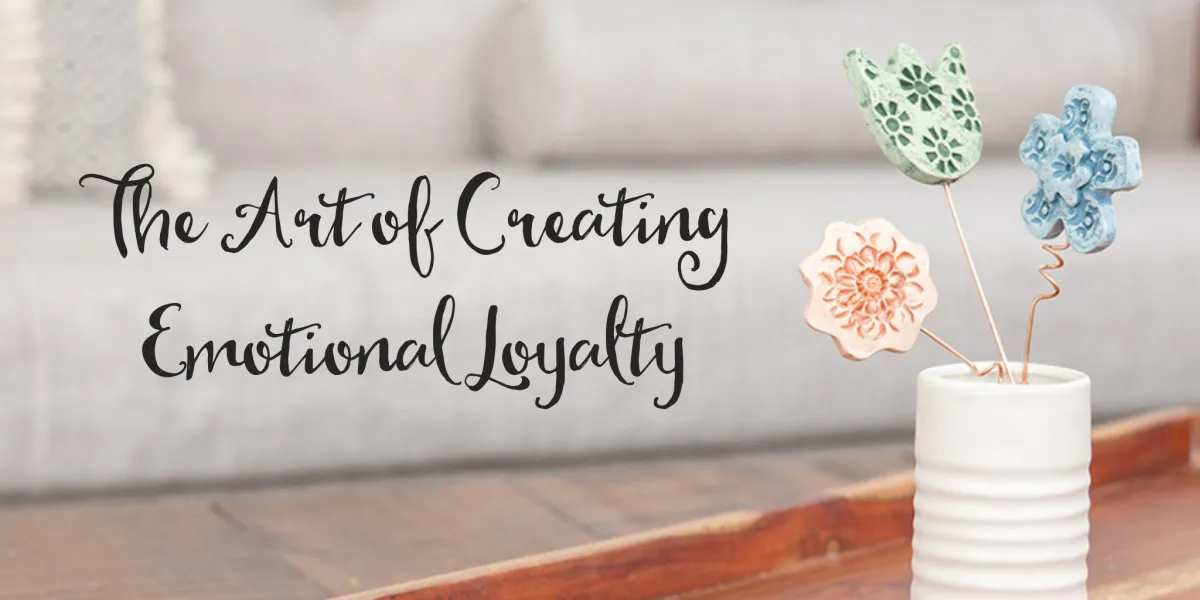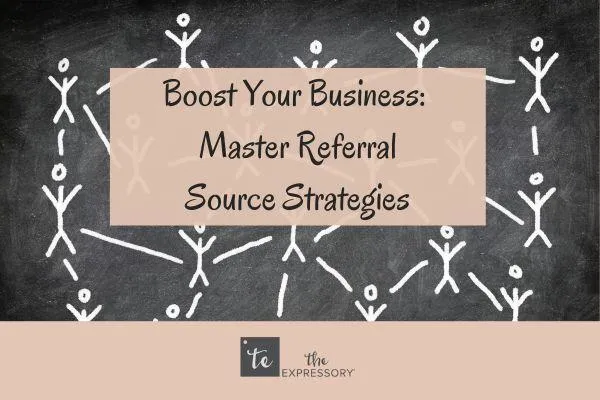
What Swimming Teaches Us About Team Relationships
In my latest video, I break down how swimming teaches us the importance of these relationship-building efforts and the specifics of what we as leaders need to nurture with our teams.
Holiday Gift Insights - What Everyone Else Is Doing
In an effort to simplify the decision-making process, we're sharing some of the trends we've seen with gifting over the years. We're even sharing our best seller and why that gift had such success.
What Makes A Successful Holiday Gift? The Travel Bag Edition
Last year we had the opportunity to work with one of our clients in the travel and tourism space to design an experience that delivered their highest engagement yet.

Framework for Maximizing Referral Relationships
Referrals are a powerful way to grow your business. In fact, they are one of the most trusted forms of advertising! According to a study by Nielsen, 92% of consumers trust referrals from people they know*. When someone refers you to a potential client or customer, it's like having a trusted ambassador who is vouching for your expertise and capabilities. As we shared in recent blog posts, statistics show that referrals lead to 69% faster conversion rates.
Unfortunately, we’ve found that most business leaders overlook nurturing the relationships that deliver referrals.
In our efforts to uncover best practices for referral programs, we were presented with the insight that not all referral sources are created equal. Some people are more likely to refer business than others, and understanding the different types of referral sources can help you focus your efforts and build stronger relationships with people who can serve as powerful business ambassadors.
Unpacking Referral Behaviors
Ariel Kopac is the CEO of Harness Your Hindrance. As part of helping her clients unleash their potential, one of the things she often covers is referrals. She has developed a framework for understanding the different types of behaviors that are common when it comes to referring business. She wanted a way to categorize why some people regularly refer and why others don’t. She notes that there are 3 main types of people when it comes to referrals – We’ll call them A, B, and C.
The A type is the most enthusiastic and outgoing. They love to connect with people and are always networking and looking for new opportunities to introduce others. They see themselves as excellent connectors and take pride in their ability to bring good people together. If you have an A-type referral source in your network, you can count on them to refer you whenever they can. Now – one of the drawbacks with this type of referrer is that they may not always be clear on why they are making the connection and they likely have not vetted the person. For a type A, quantity is more their thing.
The B type referrer is more cautious and selective when it comes to referrals. They want to make sure that the people they refer will represent them well and won't let them down. They take their reputation seriously and will only make an introduction when they're confident that it's a good match. If you want to earn referrals from a B-type source, you'll need to demonstrate your expertise and build trust over time. This is a relationship worth your time and effort to nurture.
The C type referrer is the least likely to send you business. They may not see the value in referrals, they may be afraid that something will go wrong, or maybe they’ve even been burned in the past. Chances are, they’re more introverted or prefer to keep their professional and personal lives separate. Referrals will likely feel more personal, so they avoid. If you have a C-type referral source, this is a relationship that will not likely bring referrals but may support you in other ways.
Building Relationships With Referrers
Understanding the different types of referral sources can help you tailor your relationship building approaches and provide the insights you may need when developing a referral program for your company. As you can see, type A & B are going to help you maximize the quality and quantity of referrals you receive. Below are a few suggestions to optimize your relationship with each:
Nurturing a relationship with Type A:
Express gratitude: Thank them for their referrals and validate their ability to connect people.
Provide clear guidelines: Help them understand your ideal client or project by giving specific examples. Also help them understand when it’s appropriate to hold off on an introduction. This may help avoid the unvetted connections.
Regular communication: Keep in touch with them to stay top-of-mind and share updates about your business.
Educate: Share your expertise and success stories to help them feel more confident about referring you.
Offer support/care: Show interest in their world and offer assistance when possible. Reciprocation is probably something they value.
Nurturing a relationship with Type B:
Build trust: Show genuine interest in their work. Validate their expertise and the work they do and invest time to show you care.
Prove your own expertise: Be helpful to them by sharing content and resources. This not only provides them with tools but will also demonstrate your credibility.
Communicate your values: If your values and business practices are aligned, this will increase their confidence in referring to you.
Consistently nurture the relationship: Maintain regular contact. Make sure you are spending time with these contacts 2-4 times a year. Show them that you care and that you see what they’re up to so that you maintain a very strong emotional connection.
One question that often arises when it comes to referral sources is whether it's possible to move someone from one type of category to another. The good news is that it’s possible to encourage someone to become a more enthusiastic and reliable referral source.
The best opportunity would be to develop a strong relationship with a B type referral source. By building trust over time, showing appreciation for the referrals they do make, and demonstrating your expertise, you begin to create more of that emotional loyalty that drives someone to refer more often. Emotional loyalty means that someone is loyal to you because they LOVE you. And when you develop that kind of relationship, you have the most powerful word of mouth because they want to tell everyone about you.
Tips & Tricks For Making the Most of Referral Relationships
A couple of final tips to help you make use of this framework.
Self-assess: Start by assessing your own tendencies and expectations when it comes to referring business. Are you an A, B, or C type? Understanding your own tendencies can help you approach relationships with other referrers more effectively. This increased self-awareness will help improve communication and collaboration with others referring partners. By having a better understanding of self, you’ll be able to better adapt to other’s preferences. You’ll also have a better appreciation of and empathy for others to enable you to show understanding, which is one of the keys to any enduring relationship.
Understand and set expectations: Understand the expectations and needs of each referrer and approach each relationship accordingly. Ultimately, the goal should be to build strong, mutually beneficial relationships that add value to everyone involved, whether there is a formal expectation of reciprocity. It may be best to align on the reciprocity expectations up front for some relationships.
Highlight the value: From time to time, you might consider highlighting the value of the connections they've made and sharing the benefits that have resulted. By calling out how the person’s efforts have positively contributed to opportunities, you are validating their expertise in identifying connection opportunities and showing your appreciation. Validation is another key factor for enduring relationships. Feeling personal validation can inspire them to continue making connections and build momentum for future referrals.
Developing a referral program that considers the different preferences of your referral sources will not only help you receive more valuable and warmer introductions but also contribute to building a more robust business ecosystem. In fact, it’s not only the conversions that increase, but also the lifetime value. A study by the Wharton School of Business found that a referred customer is 18% more likely to stay with a company over time compared to other customers**.
Knowing the potential bottom-line impact that referrals can have, we encourage you to take some time to think through the strategic partners you may already have identified and see if you can categorize their preferences. And if so, how can you better approach the relationship nurturing with them because of this learning? By understanding and accommodating the preferences of your referral sources, you can create stronger, more fruitful and enduring partnerships.
If you need additional guidance on how to leverage this framework, we’re happy to provide additional guidance. At The Expressory, our goal is to create enduring relationships that open more opportunities for your business. You’re always welcome to bring your questions to an upcoming Q&A and the community can also contribute to the discussion. Click here to register. Or if you’d prefer to chat one-on-one feel free to schedule some time by clicking here.
Sources:
* Nielsen. (2013). Global Trust in Advertising and Brand Messages. Retrieved from https://www.nielsen.com/eu/en/insights/report/2013/global-trust-in-advertising-and-brand-messages/
** Citation: Schmitt, P., Skiera, B., & Van den Bulte, C. (2011). Referral programs and customer value. Journal of Marketing, 75(1), 46-59.
Address:
1500 S. Sylvania Ave #106
Sturtevant WI 53177
Phone:
414.243.8971

